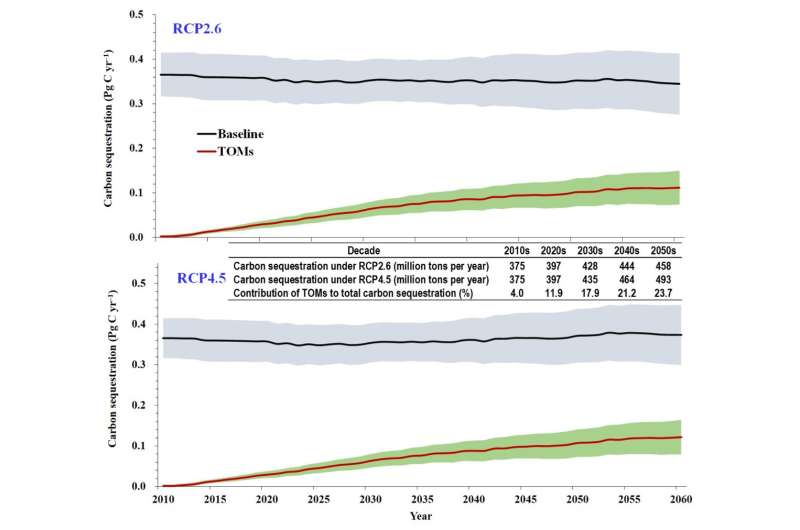China's terrestrial carbon sequestration in 2060 could offset 13% to 18% of energy-related peak carbon dioxide emissions

President Xi of China announced in September 2020 that China will "aim to have CO2 emissions peak before 2030 and achieve carbon neutrality before 2060." Although it is essential to reduce CO2 emissions from energy consumption, which accounts for more than 85% of the total annual CO2 emission in China, the role of terrestrial carbon sequestration cannot be underestimated in carbon neutrality.
The carbon sequestration in China's terrestrial ecosystems over the past decades has been well recognized and quantified. However, the extent to which terrestrial carbon sequestration can help to mitigate energy-related CO2 emissions in the future is far from certain due to a lack of integrated investigations.
A team led by Institute of Botany, Chinese Academy of Sciences, estimated the carbon sequestration in China's terrestrial ecosystems, including forest, shrubland, grassland, cropland, and wetland, over the period 2010–2060. The implementation of target-oriented managements (TOMs) and CO2 fertilization effect were considered under two climate change scenarios. This estimation was made by synthesizing available findings and using several parameter-sparse empirical models that have been calibrated and/or fitted against contemporary measurements. They then evaluated the contribution of terrestrial carbon sequestration to offsetting energy-related CO2 emissions.
They found that China's terrestrial carbon sequestration at baseline will decrease slightly under RCP2.6 scenario but keep relatively level off under RCP4.5 scenario from 2010 to 2060. The TOMs promote carbon sequestration with time. An overall increase in China's terrestrial carbon sequestration was estimated, from 375 million tons per year in the 2010s to 458 million tons (under RCP2.6) or 493 million tons per year (under RCP4.5) in the 2050s.
According to The People's Republic of China Third National Communication on Climate Change, 10.2–12.5 billion tons of CO2, or 2.8–3.4 billion tons of carbon will be emitted due to energy use in 2030, depending on different policy scenarios. According to this study, China's terrestrial carbon sequestration can offset 12–15%, 13–16%, 13–17% of energy-related peak CO2 emissions in 2030, 2040 and 2050 under different scenarios, respectively. In 2060, the percentage of offset will be 13–16% (under RCP2.6) or 15–18% (under RCP4.5).
The paper is published in National Science Review.
More information: Yao Huang et al, The role of China's terrestrial carbon sequestration 2010–2060 in offsetting energy-related CO2 emissions, National Science Review (2022). DOI: 10.1093/nsr/nwac057
Provided by Science China Press




















